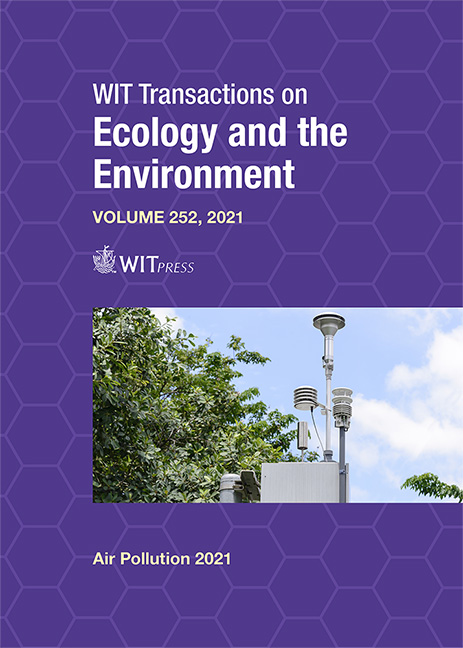ASSESSMENT OF INDOOR AND OUTDOOR EXPOSURE TO AIRBORNE PARTICLES IN SUBWAY METRO STATIONS AND THEIR ASSOCIATED HEALTH RISKS
Price
Free (open access)
Transaction
Volume
252
Pages
12
Page Range
85 - 96
Published
2021
Paper DOI
10.2495/AIR210081
Copyright
Author(s)
AMIT PASSI, SARAGUR M. SHIVA NAGENDRA, M. PRAKESH MAIYA
Abstract
This investigative study examines the exposure of metro commuters to inhalable airborne particulate matter (PM10, PM2.5, and PM1) in and around the subway premises, and their associated health risk due to regular exposure to high levels of PM. PM monitoring was carried out in five metro stations (four underground and one elevated) in Chennai, India. PM measurements were taken for 3 days a week (two weekdays and one weekend) in each metro station. The adverse impacts on health and the risk of disease were assessed using AIRQ+, a tool developed by World Health Organization (WHO). Exposure to PM was found to be up to twofold higher than the WHO stipulated safe limits. Exposure to PM2.5 was noted to be dominant (59%–70% of total PM mass). PM accumulation was found to be high in stations having a large number of commuters and those located in the busiest areas of the city. Infiltration of outdoor road emissions was found to have a significant influence on the deterioration of subway air quality. Underground metro stations were found to have the least dispersion and high accumulation of air pollutants whereas elevated metro stations were noted to have high dispersion and least accumulation. Health risk assessment indicated the non-carcinogenic risk to passengers (Hazard quotient = 1.18 and Cancer risk < 10–4), who were exposed to PM regularly for a period of 1 year. Continuous, long-term exposure up to 8 years will lead to the development of carcinogenic risk (Hazard quotient > 10 and Cancer risk > 10–4). Further, the health impact evaluation indicated high incidence per 100,000 population; asthma (816.92), unhealthy days (424.7), and lost workdays (416.57) due to acute exposure and ischemic heart disease (60.11), stroke (50), acute lower respiratory infections (30.52), and chronic obstructive pulmonary diseases (21.17) due to chronic exposure.
Keywords
subway stations, airborne particles, indoor exposure, outdoor exposure, health risk





